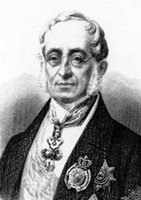A NUCLEAR THREAT IN SYRIA? A LOOK
As the world now knows, there was a mysterious, never quite explained, Israeli air raid on a Syrian site in early September, in the northern part of the country, near the border with Turkey. According to the unconfirmed, rumor-mill emanating mostly from Tel Aviv and to a lesser extent, Washington, DC., the purpose of the air raid was the destruction of a potential Syrian, nuclear reactor in the offing. As per these commentators, the Syrian facility, was using North Korean prototypes of the latter Yongbyon nuclear facility, parts of which have been offered for sale, sub rosa, on the international market by Pyongyang. Allegedly, imported from Persian or Pakistani intermediaries. While the regime in Damascus adamantly denied any such program, it was singularly odd, that such an overt Israli attack, would engender such a feeble Syrian response. Both diplomatically and otherwise. Which has lead some more intelligent observers to argue that there was indeed some skulduggery on Damascus'part in the affair. Others such as the widely followed, observer and commentator on all things, Syrian, Professor Joshua Landis, argue that there is scant evidence which has emerged so far, to confirm the argument that the bombed site was in fact (regardless of whether or not Tel Aviv thought to the contrary), a Syrian nuclear reactor in embryo (see: www.syriancomment.com). As it so happens, today it emerged that during his trip to Israel last week, President Bush, commended his hosts for the air strike, stating (as per anonymous sources) that it was a "important preventative action". Whether 'important' or not, at the very least it had less negative after affects than the his own 'preventative action', aka the invasion of Iraq in 2003...(see:www.jta.org for the leaked story).
Regardless however of this, where do I think that the truth lie in this matter? Well, once one has tabulated all the pertinent evidence, it would appear that there was to some extent, the exact degree which is unknown, and, will perhaps forever remain unknown, some type of nuclear, or proto-nuclear facility on the site. Based upon the non-existent radioactive fallout, it is more likelier than not, that the facility was in the very earliest stages of construction. Which might also explain the fact that it had virtually none of the usual signs which would show an important plant either in operation: no attempts at camouflage, underground bunkers, or even any barbed wire fencing, protecting the perimeter of the installation. In short, what appears to have been bombed was one square shaped building, 47 meters by 47 meters, with a flat roof. However in a new report which appears to confirm the likelihood of a possible secret Syrian facility, of some type at the location, the American-based, Institute for Science and International Security (ISIS), has just reported that digital, satellite imagery, recently obtained, shows that a new, larger, building, with a vaulted, rather than a flat roof, has been constructed on the previously bombed site. In addition, as previously, there appears to been piping between the facility and what may be a water treatment plant located a few kilometers away. As ISIS's reports notes, Syrian claims that there is no basis for any presumption of any nuclear or other facility at the site, are undermined by the fact, that the regime in Damascus has so far refused, the Egyptian head of the International Atomic Energy Agency (IAEA), Nobel Laureate (and leading Bush regime skeptic) Mohamed El-Baradei permission to inspect the site. Given El-Baradei's prior un-friendly attitude towards Bush regime's claims of weapons of mass destruction in both Iraq and more recently Persia, Syria had everything to gain, and, nothing to lose, by inviting the IAEA in. The failure to do so speaks volumes. At least it does for me. However judge for yourself: read the attached summary of the report from ISIS, and, go to its web site (www.isis-online.org) , for the full report with the wonderful satellite images. And, to conclude all one can say is that Damascus, by refusing at the very least, to co-operate with IAEA, lends full credence, to the hypothesis raised by the Assad's regime's critics in Israel and the USA, that it was in fact in the earliest stages of developing some type of nuclear facility, along the Yongbyon lines. Which if true, it would appear, the world owes the state of Israel, a debt of gratitude for stopping the program in its tracks. One only hopes that the regime in Damascus will take in the lesson learned and, not make another attempt to 'go nuclear'. Which based upon the newest report, one is not entirely sure of at this time.
THE INSTITUTE FOR SCIENCE AND INTERNATIONAL SECURITY NEW CONSTRUCTION AT SYRIAN SITE JANUARY 14, 2008..
"ISIS identified the likely target site of the Israeli raid in an October 24, 2007 report. The destroyed building was widely reported to be a nuclear reactor under construction. The new building has dimensions of approximately 60 meters by 60 meters, larger than the destroyed building, which had dimensions of about 47 meters by 47 meters. In addition, the roof on the new building is vaulted at the top instead of flat. The height of the new building was not determined from the imagery. The building's purpose can also not be discerned from the satellite imagery. There are trenches and what appear to be sections of pipe east of the building (running away from the river). The trenches and pipes can be seen in the imagery for several kilometers. The trenches end at a site that may be a water treatment facility. IAEA Director General Mohamed ElBaradei has sought permission from Syria to inspect the site, but so far Syria has denied the IAEA access. If Syria allows the IAEA to inspect the site, the inspectors will have a more difficult time looking for evidence of reactor construction, because the new building covers whatever was left of the original building". www.isis-online.org











0 Comments:
Post a Comment
<< Home